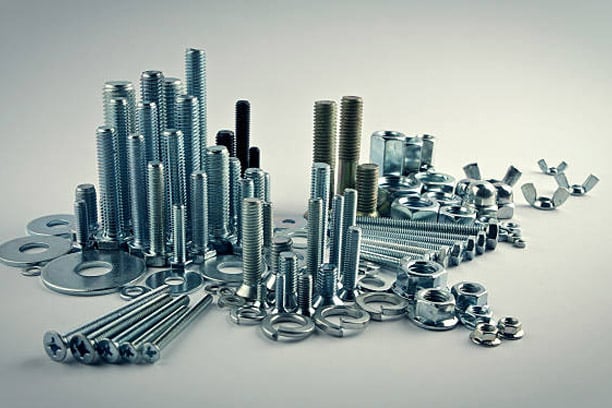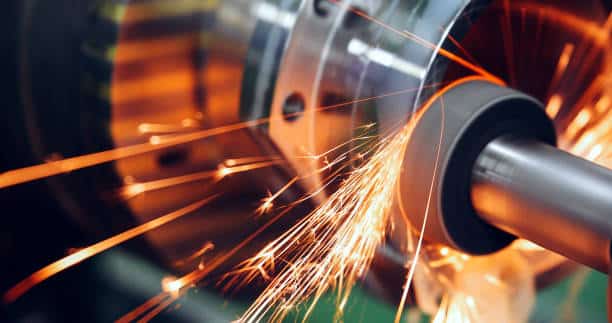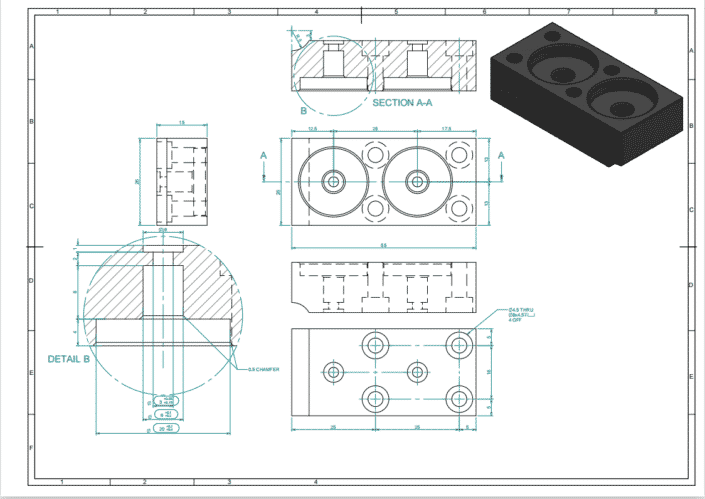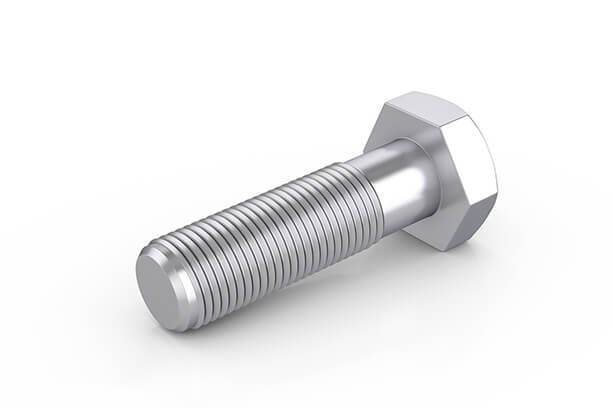What is the very first thing that springs to mind when you think about fasteners? Most likely, it’s a screw. They have become a universal symbol for fasteners due to their distinctive helical ridges. The outside threading on screws helps them penetrate wood, metal, and other materials for a firm grip. Of course, not every screw is created equal. A machine screw, for instance, has a special shape that sets it apart from other kinds of screws. In this article, you can find information on machine screws and how they function.
The Fundamentals of Machine Screws
Similarly to other types of fasteners, machine screws are used to secure the interface between two or more pieces of metal. Yet, machine screws stand out from the crowd because of their specialized size. Screws with a diameter of up to 0.75 inches are considered machine screws by the American Society of Mechanical Engineers or ASME. In terms of diameter, they may be smaller than 0.75 inches but no more than 0.75 inches. Machine screws are often smaller than other kinds of screws for this reason.
Machine screws are distinguished by their consistent threading, apart from small sizes (0.75 inches or less in diameter). Just what does this imply? So, the threading on screws is usually either uniform or tapered. When a screw is said to have uniform threading, all of the helical ridges on its outside have the same size from tip to tail. Tapered threading, on the other hand, causes the screw’s threads to widen as they descend.
Differences between Machine Screws and Other Fasteners
Machine screws are unlike other types of fasteners like Inconel hex lag bolts or nitronic 50 Phillips screws. There are substantial variances between these fastener types, making their interchange a bad idea. Differences between machine screws and other kinds usually involve:
They Thread Through Pre-Existing Holes
Machine screws are often utilized in threaded holes, which sets them apart from other kinds of screws. With the majority of other types of screws, the screw itself makes the hole when you drive it into most materials. Having a threaded hole to push the screw into increases the likelihood of a more secure connection being created. This means improved product quality, which is crucial in today’s cutthroat business climate.
Their Application
The majority of machine screws serve the purpose of securing electrical components, mechanical components, or components of industrial equipment together. Because of this, they are often far more robust than the various other kinds of fasteners.
The Threading
Machine screws’ threading is distinct from that of ordinary screws in a number of important ways. There is often not a thread along the whole length of the screw shaft. In addition, most machine screws are often built to have two different kinds of threads, which are referred to as coarse thread and fine thread, respectively. Furthermore, machine screws may be classified as either coarse (24 threads per inch) or fine (32 threads per inch). Machine screws with a variety of thread counts do exist. Still, they are quite unusual and often need a special order.
The Heads
All of the different kinds of screws have heads that are designed in a manner that is comparable to machine screws. When selecting them, you must take into consideration the purpose of the screw and make certain that the kind of screw head you acquire is compatible with the application. For example, if you want to install a screw that cannot be tampered with, you might need to acquire a machine screw with a head that is specifically built for it.
Machine Screws Types
Machine screws are available in various forms with an array of different head types, materials, thread gradings, and sizes. Here, we summarize part of the most common machine screw types:
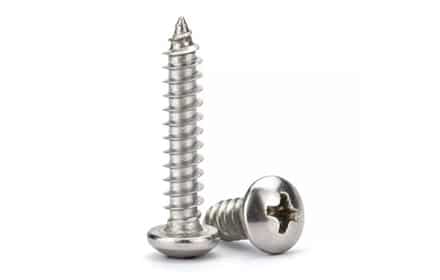
Round head screw
Applications: Machinery
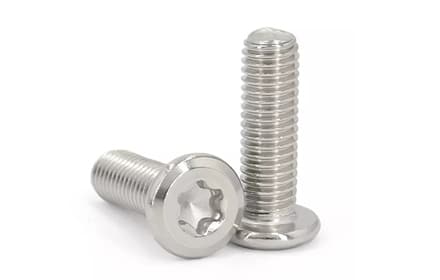
Pan head screw
Application: Automotive or mechanical components such as headlights and license plates
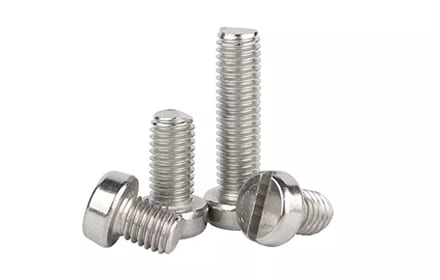
Cheese head screw
Application: Automotive, home appliances, and stationary electrical components; cross-drive version for automotive lights
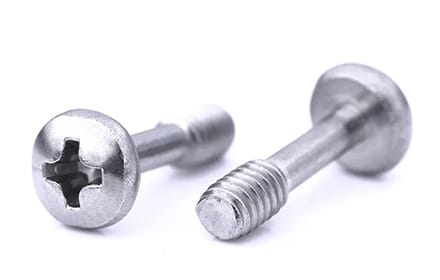
Binder head screw
Applications: Bound material samples and large brochures – also available for electrical applications, recessed area under head provides room for wire connections
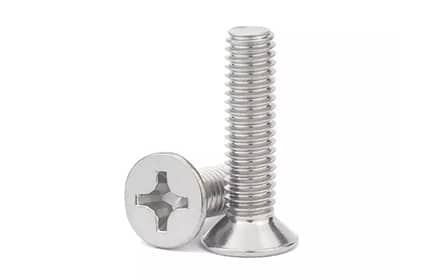
Oval head screw
Applications: Switch covers and construction, especially a decorative finish is required

Fillister head screw
Applications: Machine components and precision instruments
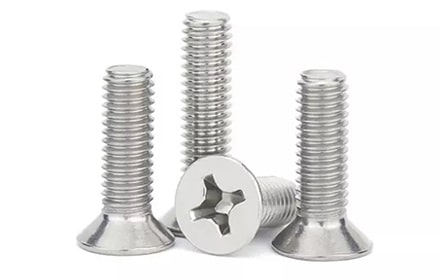
Flat head screw
Applications: Lighting fixtures, handrails, and furniture
How to Measure a Machine Screw?
There is a broad range of machine screw sizes available. Measuring from the base of the screw’s head to its very tip yields the standard length for machine screws. For the most part, it describes machine screws. Countersunk machine screws, or any countersunk screw, are perceived differently. In most cases, the screw will be the identical length as the corresponding hole. Machine screws with countersinks are a special kind whose dimensions are made to fit perfectly into the recess they are installed in. So, the length of these screws is determined by gauging it from the top of the screw’s head to its bottom.
US Machine Screw Diameters Chart
| Size No. | Nominal thread diameter | ||
| Decimal (mm) | Nearest fractional (in) | Threads per inch | |
| #2 | 0.086 | 3/32 | 64 |
| #3 | 0.099 | 7/64 | 56 |
| #4 | 0.112 | 7/64 | 48 |
| #6 | 0.138 | 9/64 | 40 |
| #8 | 0.164 | 5/32 | 36 |
| #10 | 0.190 | 3/16 | 32 |
| #12 | 0.216 | 7/32 | 28 |
What are Machine Screws Used for?
Machine screws are often put to use in applications in which metal panels and pieces need to be firmly fastened together. This is by far the most prevalent usage for machine screws. This is a need that must be met on a daily basis in a wide variety of industrial, manufacturing, building, assembling, processing, and production settings.
What is the proper way to utilize machine screws? To put it another way, the process of using machine screws is very similar to the process of using any other sort of screw or bolt. For instructions on how to use machine screws, please adhere to the steps below:
- A machine screw is used with a manual or electric screwdriver to drill or tap it into a pre-existing hole or nut.
- Machine screws are often used in conjunction with power tools. This is because heavier-duty or industrial-scale arrangements and construction projects have a greater need for fasteners of this sort.
- Machine screws are frequently utilized with a nut and inserted into a drilled or tapped hole. The nut used with a machine screw is normally placed behind the item being attached from the back.
- Machine screws are quite useful since they may be used to secure a wide variety of materials. In addition to being utilized on terminal strips and for establishing a wide variety of electrical connections, they are also occasionally employed to hold down or sandwich membranes and gaskets.
- Machine screws are versatile enough to be used for different purposes, such as securing panels or pieces that need to be maintained at a certain distance apart. This is accomplished by using a threaded coupling that enables two machine screws to be pushed in from opposite directions. The length of the coupling used between the fasteners is determined by the gap size you need to achieve.
Choose Runsom to Customize Your Machine Screws
Now that you know more about the machine screw, decide on the right type of one to apply to your application. Choosing a reliable manufacturer is also a significant factor in the success of your project. Count on Runsom, we have rich experience in the fabrication of machine screws with our exceptional CNC machining services, including CNC milling, CNC turning, 5-axis CNC machining, etc.
Other Articles You May be Interested in:

